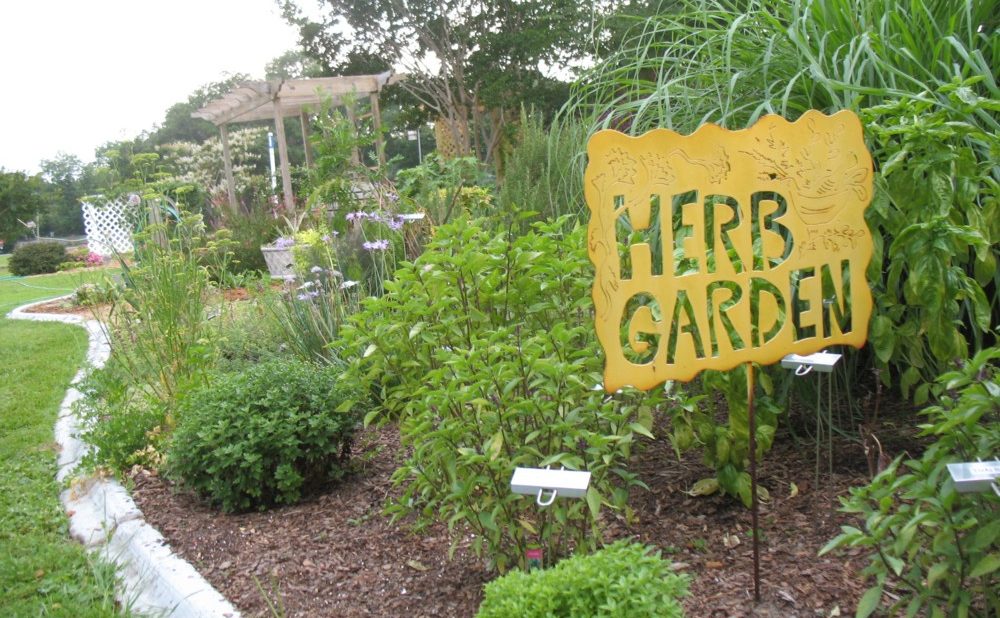
by Ashley Stonecipher | Sep 23, 2021
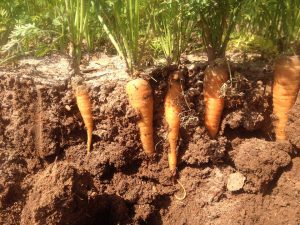
Photo by Full Earth Farm.
Yes, that’s right! We made it through the hottest part of the year and we are looking ahead to fall just around the corner! I am excited to be discussing September and what we can do to prepare for fall in the garden. As the nighttime temperatures start to cool down, we are given many more options.
For annual color plantings in September, try Ageratum, Celosia, Zinnias, and Wax Begonia to add fall color to your landscape. Bulbs will also add color, texture, and pattern to a bed. If you have some extra space, a variety of elephant ears could really accent a bed or you could always go with the classic calla, narcissus or zephyr lily. Popular vegetables to plant in North Florida in September are broccoli, carrot, cabbage, and collards. See Vegetable Gardening in Florida This is also the time of year to establish strawberry plants. Some great herbs to get started are Mexican tarragon, mint, rosemary, and basil.
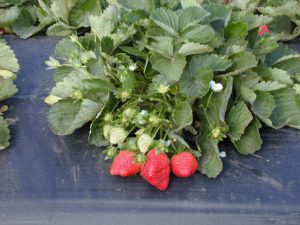
Image Credit: Matthew Orwat UF/IFAS Extension Washington County
There are many things that can be done in your lawn during September. Monitoring your lawn for its health and potential insect pests is important this time of year. Common insects to scout for are fall armyworms, chinch bugs, mole crickets, and sod webworms. The last fertilizer application should be done by the middle to end of September. Make sure you choose a fertilizer with little to no phosphorus unless a soil test shows differently. To maintain a healthy lawn, avoid weed and feed products and only apply herbicides in areas with high infestations of weeds. Weed and feed products are not recommended because the timing of when to fertilize and the timing of the weed killer is not always the same. The best management practice is to use a separate treatment for weeds and when possible spot treat weeds.
If you already have bulbs in your landscape from previous growing seasons, this is the time to divide and replant those that are big. You can also add organic matter to new planting areas. Continue working on your vegetable plants and prepare them for either transplants for a fast start, or plants seeds for more variety. Throughout your landscape, it is important that plants are getting the right amount of water as we go in and out of wet and dry weather this time of year.
October will be here before we know it in just a couple of weeks. Look out for the next article to come. We will be getting into the cooler nights and more options for planting vegetables and herbs!
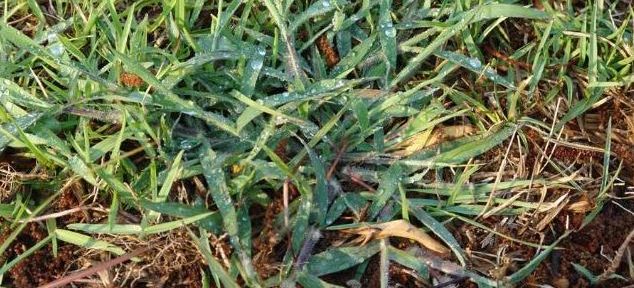
by Larry Williams | Aug 26, 2021
Hot, summer months are not the time to be using most lawn herbicides.
One issue is the heat of summer. Most lawn herbicide labels include statements such as the following.
“Do not apply when temperature exceeds 90°F.” “Do not broadcast apply this product when air temperatures are above 90°F (85°F for St. Augustinegrass) unless temporary turf injury can be tolerated.”
Every year we’ll see lawns that are injured or killed because of lawn herbicides being applied when temperatures are too hot.
Summer is usually a rainy and windy time of the year. Many lawn herbicide labels include statements such as the following.
“Allow 12 hours after application before watering lawn for maximum effectives on listed weeds.” “Apply only when wind is no more than 10 mph.” “Applying this product in calm weather when rain is not predicted for the next 24 hours will help to ensure that wind or rain does not blow or wash pesticide off the treatment area.”
It is critical to read and follow the label directions and precautions for any pesticide you use. Pesticide labels, including herbicides, include the following statements.
“To the extent consistent with applicable law, the buyer assumes all risks of use, storage, or handling of this product not in accordance with label directions.” “It is a violation of Federal law to use this product in a manner inconsistent with its labeling.”
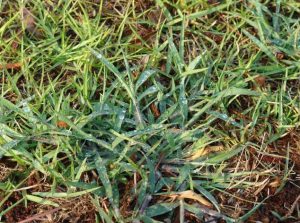
Crabgrass growing in centipedegrass lawn. Photo credit: UF/IFAS Extension
By the time summer arrives, many of the lawn weeds are mature, which means they are well established with extensive root systems. These mature, well established weeds are much more difficult to control. They are more susceptible to herbicides when they are small, young, and not well established. Also, these mature weeds have been allowed to produce countless numbers of seeds as they move into summer. Most weeds are prolific seed producers. For example, a single crabgrass plant (a common summer lawn weed) can produce 150,000 seeds.
Applying a preemergence lawn herbicide in February to help prevent summer annual weeds such as crabgrass or applying a postemergence lawn herbicide during spring while the weather is mild and before the weeds are out of control simply makes more sense than waiting until summer.
The best options now with lawn weed control involve continuing to follow good mowing practices, maybe hand removal of some weeds, and just simply waiting it out until next February and spring to worry with the use of lawn herbicides.
In the meantime, you may want to read the following UF/IFAS Extension publication on lawn weed control.
https://edis.ifas.ufl.edu/pdf/EP/EP14100.pdf
Larry Williams, UF/IFAS
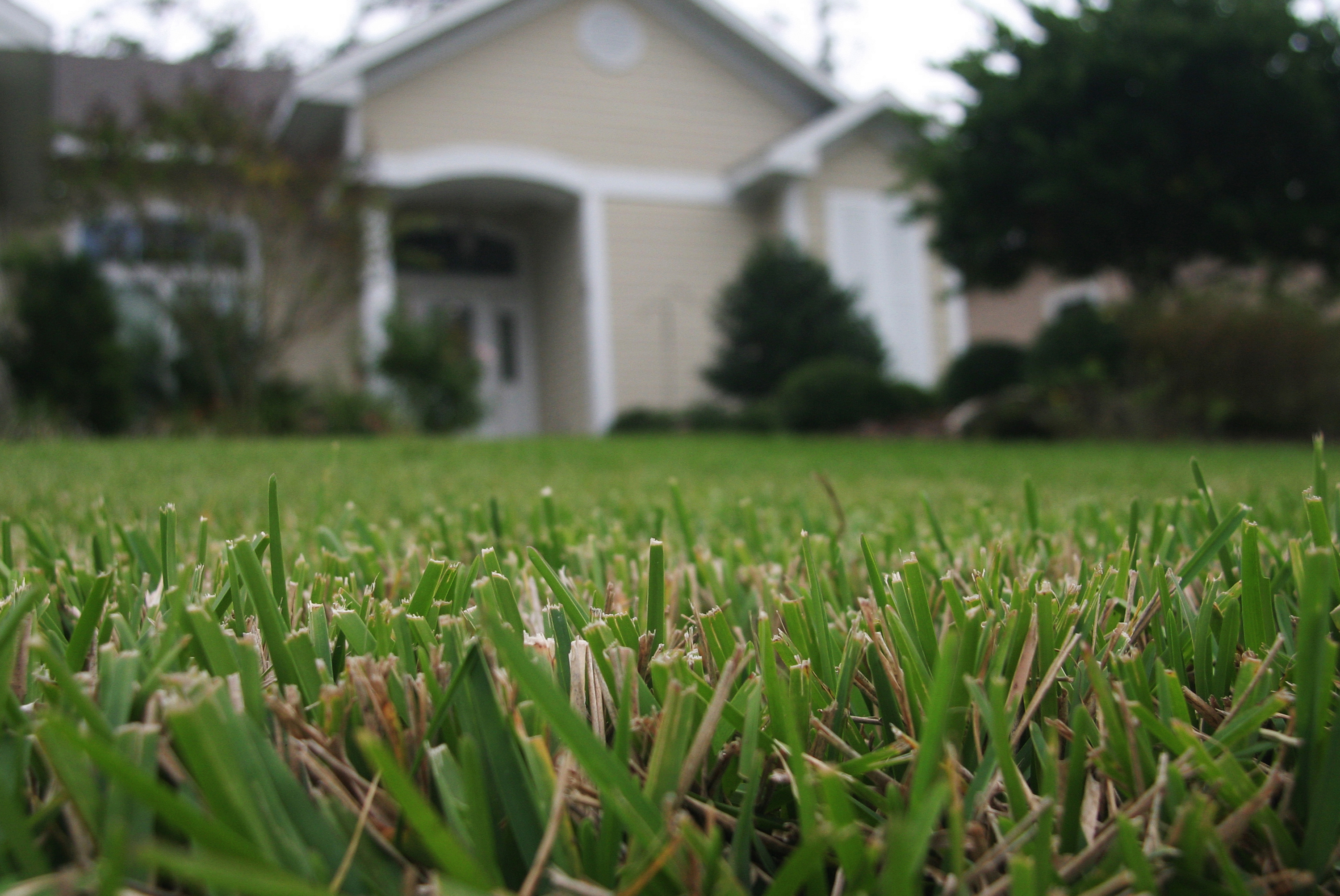
by Daniel J. Leonard | Aug 26, 2021
Nearly everyone likes turfgrass lawns. They’re pretty and green. They filter water, chemicals, and nutrients before they enter our groundwater systems. They provide a recreation spot for people and pets. But lawns also come with maintenance tasks, one of which is weed control. Fortunately, keeping our common Centipedegrass lawns relatively weed free is as simple as smart management and utilizing herbicides effectively. Though the number of herbicides available for purchase can be overwhelming, you only need three to keep weeds at bay – a selective grass herbicide, a strong broadleaf herbicide, and a sedge herbicide!
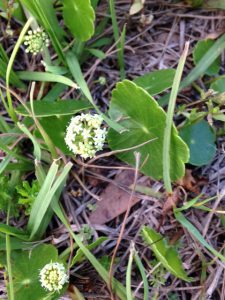
Dollarweed, one of the toughest broadleaf weeds for homeowners to control. Picture courtesy of Julie McConnell, UF/IFAS.
First up on the essential herbicide list is the selective grass herbicide Sethoxydim. While most folks’ weed focus is centered on broadleaf weeds, grassy weeds like Crabgrass, Bahiagrass, Goosegrass, and others can be just as problematic and make for a very unsightly lawn. Enter Sethoxydim. Cheap and easy to find, Sethoxydim is offered as the active ingredient in many branded products like Fertilome Over the Top Grass Killer, Hi-Yield Grass Killer, and many more. These products control weedy grass species without seriously harming Centipedegrass or broadleaf ornamental trees and shrubs (Centipedegrass may temporarily be yellowed after sethoxydim application but will recover). Not only will it kill out the unwanted grass growing in your Centipede, but it will also remove these weeds from your flower beds!
Second, having a strong broadleaf herbicide on hand is necessary. I say “strong” because many of the homeowner grade products available at garden centers simply don’t have the “juice” to control tough broadleaf weeds like Dollarweed, Doveweed, Virginia Buttonweed, and others. For this job, I prefer to use a commercial grade 3-way product like Celsius WG by Bayer. Celsius WG is a 3-way combination herbicide with a healthy dose of Dicamba as its primary ingredient. Though Dicamba is a notoriously volatile chemical known to cause damage to unintended plants through drift in hot weather, combining it with the two other products in Celsius WG makes it safe to use in lawns, even in the heat of summer. While strong broadleaf herbicides like Celsius WG are expensive on the front end, don’t let that deter you. These products wind up being very cost effective in the long run due to minute mixing rates (one bottle goes a very long way in most residential lawns) and effectiveness – you simply will not need to waste time and money spraying lawn weeds over and over to obtain control like is necessary with lesser products – one or two applications will solve the toughest broadleaf weed problems.
Finally, any good lawn weed control program will include a quality sedge control herbicide. Sedges (often called “nutgrass”) look like grasses but are a completely different category of plants and as such, require specialized herbicide chemistries to achieve control. Sedge weeds prefer wetter areas of lawns, though they can occur in pretty much any lawn site and are very unsightly. For this weed category, there are several options available to homeowners. The one that consistently provides the best control in lawns is Halosulfuron-methyl, the active ingredient in the aptly named product Sedgehammer. Conveniently coming in individually pre-mixed packets for small lawns or a larger bottle when more acreage is to be treated, Sedgehammer couldn’t be easier to mix and use. While Sedgehammer and similar products are extremely effective in controlling various sedge weeds, they tend to work very slowly, and patience is required. Weeds immediately stop growing following a Sedgehammer application, but it can take up to three weeks to notice the sedges dying.
While having and using the above three herbicides can control almost any weed homeowners may encounter in their lawns, it is important to remember that herbicides are not substitutes for proper lawn management. When good cultural practices in lawns are followed, such as mowing at the correct height, only watering when necessary, following UF/IFAS fertilizer recommendations, etc., chemical weed control may not even be necessary in many cases! Also, once the decision to purchase and use chemical herbicides has been made, it is critical that one always read the label before using any herbicide product. This ensures safe and effective use of the product; the label is literally the law!
For assistance in choosing the correct herbicide for your lawn and other lawn care concerns, contact your local UF/IFAS Extension Office! Happy Gardening!
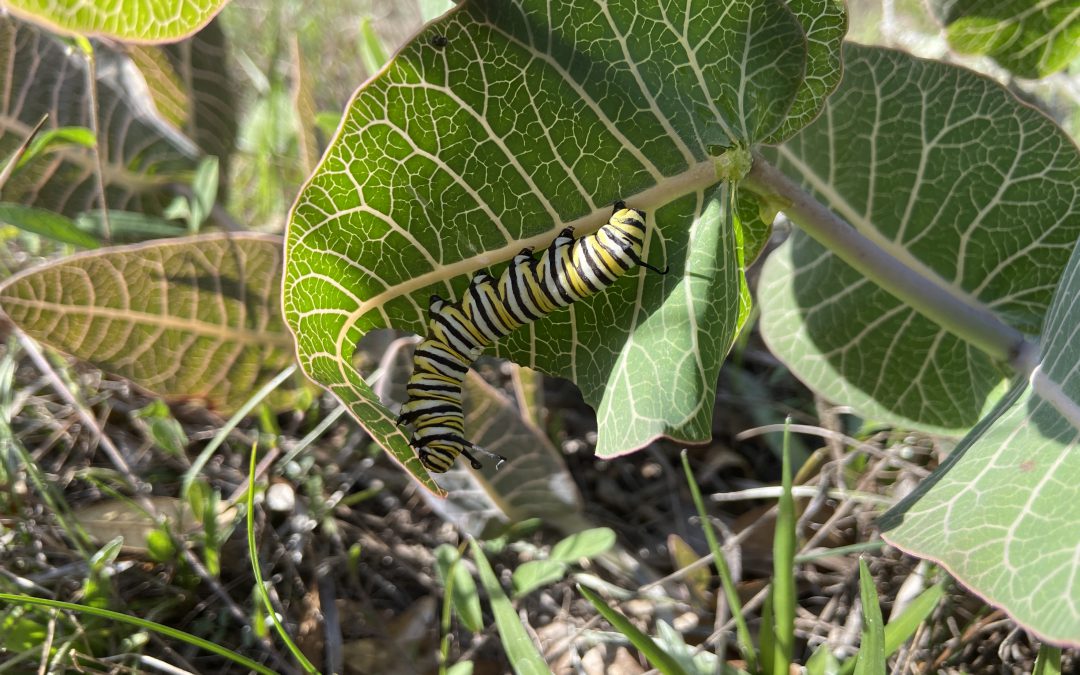
by Mary Salinas | Aug 20, 2021
On August 12, 2021, our panel answered questions on a wide variety of landscape topics. Maybe you are asking the same questions, so read on!
Ideas on choosing plants
What are some perennials that can be planted this late in the summer but will still bloom through the cooler months into fall?
Duranta erecta ‘Sapphire Showers’ or ‘Gold Mound’, firespike, Senna bicapsularis, shrimp plant, lion’s ear
Where can native plants be obtained?
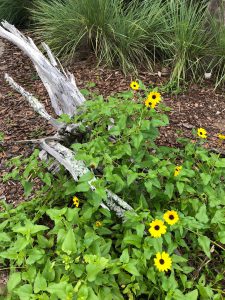
Dune sunflower, Helianthus debilis. Photo credit: Mary Salinas UF/IFAS Extension.
Gardening Solutions: Florida Native Plants – see link to FANN: https://gardeningsolutions.ifas.ufl.edu/plants/ornamentals/native-plants.html
What are some evergreen groundcover options for our area?
Mondo grass, Japanese plum yew, shore juniper, ajuga, ferns such as autumn fern.
What are some ideas for partial morning sun butterfly attracting tall flowers to plant now?
Milkweed, salt and pepper plant, swamp sunflower, dune sunflower, ironweed, porterweed, and salt bush.
I’m interested in moving away from a monoculture lawn. What are some suggestions for alternatives?
Perennial peanut, powderpuff mimosa, and frogfruit.
We are new to Florida and have questions about everything in our landscape.
Florida-Friendly-Landscaping TM Program and FFL Web Apps: https://ffl.ifas.ufl.edu/
https://ffl.ifas.ufl.edu/resources/apps/
UF IFAS Gardening Solutions: https://gardeningsolutions.ifas.ufl.edu/
What are some of the top trends in landscaping today?
Houseplants, edible gardens, native plants, food forests, attracting wildlife, container gardening, and zoysiagrass lawns
Edibles
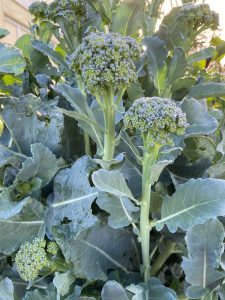
Artwork broccoli is a variety that produces small heads. Photo credit: Mary Salinas UF/IFAS Extension.
What vegetables are suitable for fall/winter gardening?
Cool Season Vegetables: https://gardeningsolutions.ifas.ufl.edu/plants/edibles/vegetables/cool-season-vegetables.html
North Florida Gardening Calendar: https://edis.ifas.ufl.edu/publication/EP451%20%20%20
Florida Vegetable Gardening Guide: https://edis.ifas.ufl.edu/publication/vh021
How can I add herbs to my landscape?
Herbs in the Florida Garden: https://gardeningsolutions.ifas.ufl.edu/plants/edibles/vegetables/herbs.html
My figs are green and hard. When do they ripen?
Why Won’t My Figs Ripen: https://www.lsuagcenter.com/profiles/rbogren/articles/page1597952870939
What is best soil for raised bed vegetable gardens?
Gardening in Raised Beds: https://edis.ifas.ufl.edu/publication/EP472
And there are always questions about weeds
How can I eradicate cogongrass?
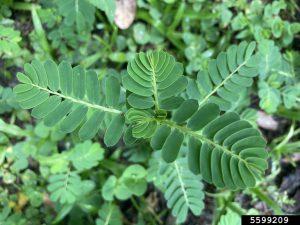
Chamber bitter is a troublesome warm season weed in our region. Photo credit: Brantlee Spakes Richter, University of Florida, Bugwood.org
Cogongrass: https://edis.ifas.ufl.edu/publication/WG202
Is it okay to use cardboard for weed control?
The Cardboard Controversy: https://gardenprofessors.com/the-cardboard-controversy/
What is the best way to control weeds in grass and landscape beds?
Weed Management Guide for Florida Lawns: https://edis.ifas.ufl.edu/publication/EP141
Improving Weed Control in Landscape Planting Beds: https://edis.ifas.ufl.edu/pdf/EP/EP52300.pdf
Landscape practices
Can ground water be brackish and stunt plants?
Reclaimed Water Use in the Landscape: https://edis.ifas.ufl.edu/publication/ss545
How can I prevent erosion from rainwater runoff?
Stormwater Runoff Control – NRCS: https://www.nrcs.usda.gov/wps/portal/nrcs/detail/national/water/?cid=nrcs144p2_027171
Rain Gardens: https://gardeningsolutions.ifas.ufl.edu/design/types-of-gardens/rain-gardens.html
And https://gardeningsolutions.ifas.ufl.edu/pdf/articles/rain-garden-manual-hillsborough.pdf
What is the best time of the year to propagate flowering trees in zone 8B?
Landscape Plant Propagation Information Page – UF/IFAS Env. Hort: https://hort.ifas.ufl.edu/database/lppi/
Which type of mulch works best on slopes greater than 3 percent?
Landscape Mulches: How Quickly do they Settle?: https://edis.ifas.ufl.edu/publication/FR052
When should bulbs be fertilized?
Bulbs and More – UI Extension: https://web.extension.illinois.edu/bulbs/planting.cfm
Should I cut the spent blooms of agapanthus?
Agapanthus, extending the bloom time: https://gardeningsolutions.ifas.ufl.edu/plants/ornamentals/agapanthus.html
http://blogs.ifas.ufl.edu/wakullaco/2020/10/07/extending-bloom-time/
Plant questions
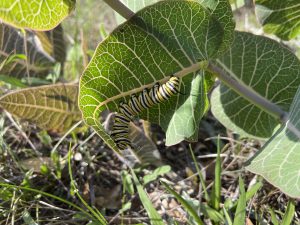
Monarch caterpillar munching on our native sandhill milkweed, Asclepias humistrata. Photo credit: Mary Salinas, UF IFAS Extension.
I planted native milkweed and have many monarch caterpillars. Should I protect them or leave them in nature?
It’s best to leave them in place. Featured Creatures: Monarch Butterfly: https://edis.ifas.ufl.edu/pdf/IN/IN780/IN780-Dxyup8sjiv.pdf
How does Vinca (periwinkle) do in direct sun? Will it make it through one of our panhandle summers? Can I plant in late August?
Periwinkles and No more fail with Cora series: https://gardeningsolutions.ifas.ufl.edu/plants/ornamentals/periwinkles.html#:~:text=Plant%20your%20periwinkles%20where%20they,rot%20if%20irrigated%20too%20frequently.
Insect and disease pests
What to do if you get termites in your raised bed?
The Facts About Termites and Mulch: https://edis.ifas.ufl.edu/publication/IN651
How to combat fungus?
Guidelines for ID and Management of Plant Disease Problems: https://edis.ifas.ufl.edu/publication/mg442
Are there preventative measures to prevent diseases when the humidity is very high and it is hot?
Fungi in Your Landscape by Maxine Hunter: http://blogs.ifas.ufl.edu/marionco/2020/01/16/fungi-in-your-landscape/
If you missed an episode, check out our playlist on YouTube https://www.youtube.com/watch?v=bp0HfdEkIQw&list=PLhgoAzWbtRXImdFE8Jdt0jsAOd-XldNCd
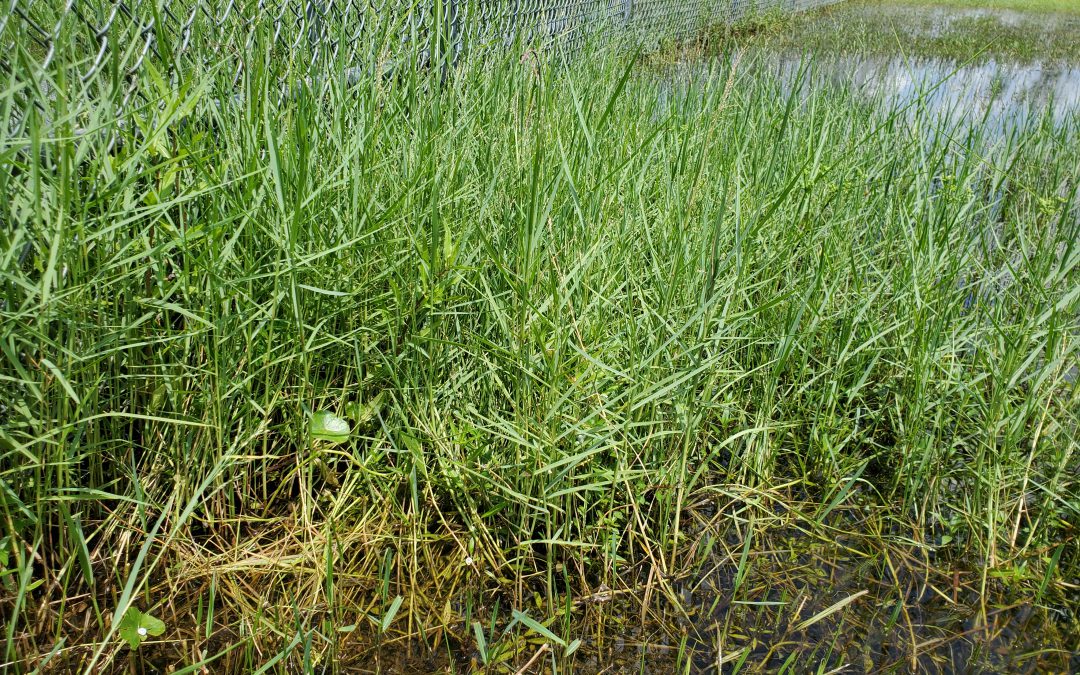
by Daniel J. Leonard | Aug 18, 2021
One of the most conspicuous outcomes from Hurricane Michael was the complete disruption of local lawns and landscapes. Giant holes where tree roots once existed, ruts and compacted ground from clean-up equipment, and formerly shaded acres flooded with fresh sunshine were three very common situations property owners suddenly found themselves faced with. An unforeseen consequence of all this newly bare ground ripe was the intrusion by a variety of very aggressive weeds. One invasive exotic weed that has made itself right at home in many county landscapes following Michael and that I’ve seen lots of lately is Torpedograss (Panicum repens).
Often brought into landscapes with “fill-dirt” and “topsoil” applications or spread through mowing, Torpedograss is an aggressive perennial grass in the same plant family as Bermudagrass and Cogongrass. Like many invasive exotic species, Torpedograss was introduced into the United States in the late 1800’s from its native Africa and Asia as a potential forage crop. Unlike its cousin Cogongrass, the Torpedograss is highly palatable to cattle and so gained a quick following among the ranching community. Unfortunately, over the next century, Torpedograss had left the pasture and turned into one of the biggest pest plants in Florida, ruining many a lawn, taking over 70% of the state’s public waterways, disrupting native marshlands, and costing Florida over $2 million a year to control!
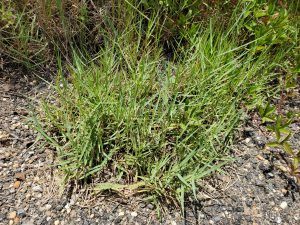
Torpedograss growing in a Calhoun County gravel driveway. Photo courtesy of Daniel Leonard.
Torpedograss spreads rapidly through underground, sharply pointed, white-colored, “torpedo-like” growing tips and can dominate wet or dry areas in short order. The species often hides in lawns when mixed in and mowed with other turfgrasses (especially Zoysiagrass, which it closely resembles), growing unnoticed until infestations are severe and control options are few. This makes scouting for the weed and accurate identification crucial! Torpedograss can be identified by its bluish-green leaf and stem color, hairy leaf edges, stiff overall appearance, distinctive panicle-type flowers, and can grow quickly to 3’ or so in height, spreading indefinitely. Though it initially can resemble other turf species, once you know what you’re looking for, Torpedograss stands out visually amongst its competitors.
After identifying Torpedograss, control methods can be chosen depending on the site it has infested. In lawns, options vary based on turf species. If infestation occurs in the common Centipedegrass and Bahiagrass lawns of the Panhandle, options are few. Products with the active ingredient Sethoxydim (Poast, Fertilome Over the Top, Southern Ag Grass Killer, etc.) can suppress Torpedograss growth in these situations but will not destroy it and are not permanent options. If the area infested is not large, killing the whole spot out with a non-selective herbicide like Glyphosate (Roundup and generics) and then resodding is probably a better option. In Bermudagrass or Zoysiagrass lawns, products with the active ingredient quinclorac (Drive and generics) are very effective at controlling Torpedograss without having to go the “nuclear” glyphosate route. Unfortunately, there are no effective controls for Torpedograss in St. Augustinegrass lawns.
In landscaped beds, Torpedograss is somewhat easier to control. Hand pulling in beds can be effective where new invasions occur but are impractical once the weeds gain a strong foothold. Once that occurs, chemical control is required. In bare or mulched areas away from plants, careful spot spraying in bare areas with a 2-3% glyphosate solution is extremely effective. Where the Torpedograss has grown into and through landscape plants, an “over-the-top” application of fluazifop (Fusilade) will take out the weed without harming most ornamental plant species! (Be sure to check the Fusilade label to make sure your ornamental plant species are safe to apply to!)
Torpedograss is one of the most serious, yet overlooked, invasive plants that occurs in Florida. However, through prevention and control techniques like cleaning mowers when mowing infested areas, accurate identification, and prompt, effective herbicide use, you can keep the weed from taking over your lawn and landscape! For assistance in identifying and controlling Torpedograss and other lawn weeds, contact your local UF/IFAS County Extension office! Happy gardening!
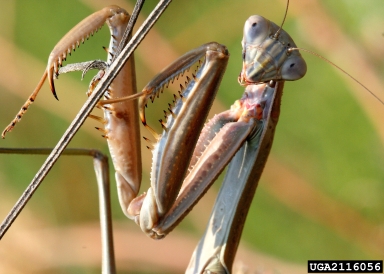
by Mary Salinas | Aug 18, 2021
For those of you who tuned into the July 29 edition of Gardening in the Panhandle LIVE, beneficial insects was the topic of the day. Here are links to the publications our panelists talked about.
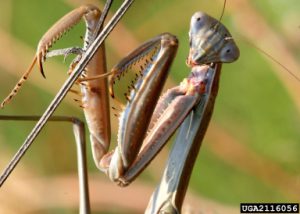
Mantid. Photo credit: David Cappaert, Bugwood.org.
How do I identify the kind of insect I have?
Recognizing beneficial bugs: Natural Enemies Gallery from UC Davis http://ipm.ucanr.edu/natural-enemies/
How to distinguish the predatory stink bug from the ones that harm our crops: https://entomology.ces.ncsu.edu/wp-content/uploads/2014/01/FL-pred.jpg
How to tell difference in stink bugs and leaf footed insects. Are both harmful? UF/IFAS Featured Creatures: leaffooted bug – Leptoglossus phyllopus (Linnaeus) (ufl.edu)
How can I tell bad beetles from good ones? Helpful, Harmful, Harmless Identification Guide is one resource available: http://ifasbooks.ifas.ufl.edu/p-153-helpful-harmful-harmless.aspx
How can we encourage beneficial insects?
How can we encourage the beneficial insect species?
- Plant more flowers attract pollinators that also feed on insects.
- Diversity of plants in the landscape.
- Use softer or more selective pesticides to minimize damage to beneficials.
Is it helpful to order beneficial insects such as lady bugs? Encouraging Beneficial Insects in Your Garden OSU: https://catalog.extension.oregonstate.edu/sites/catalog/files/project/pdf/pnw550.pdf
How effective is buying predatory insects to release in your greenhouse? Natural Enemies and Biological Control: https://edis.ifas.ufl.edu/publication/IN120
Can I buy beneficial insects to start breeding in my garden? Natural Enemy Releases for Biological Control of Crop Pests: https://www2.ipm.ucanr.edu/agriculture/natural-enemy-releases-for-biological-control-of-crop-pests/
What benefit would result by planting city right-of-ways with native wild flowers? https://edis.ifas.ufl.edu/publication/in1316; https://adamgdale.files.wordpress.com/2020/03/gcm_feb2020.pdf
Can an individual gardener sustain an ecosystem for beneficial insects? Penn State Article on beneficial insects that mentions some flowering plants that help support predators and parasitoids: https://extension.psu.edu/attracting-beneficial-insects
Specific Insects
How do I get rid of mole crickets? UF/IFAS Mole Crickets: https://edis.ifas.ufl.edu/entity/topic/mole_crickets
Are wasps really beneficial? Beneficial Insects: Predators!: https://sfyl.ifas.ufl.edu/sarasota/gardening-and-landscaping/horticulture-commercial/integrated-pest-management/beneficial-insects/
Is a dish soap solution effective against wasps? Soaps, Detergents, and Pest Management: https://gardeningsolutions.ifas.ufl.edu/care/pests-and-diseases/pests/management/soaps-detergents-and-pest-management.html
How to control leaf footed bugs? Handpick them, attract beneficials, create diverse plantings in landscape, accept some damage, and control them when in the juvenile stage.
Can you tell me about praying mantids? Praying Mantids: https://entomology.ca.uky.edu/files/efpdf2/ef418.pdf
Are there any beneficial insects that keep mosquito populations down? Dragonfly larvae in water, mosquitofish
What are the little insects that hop out of centipede grass? Are they beneficial?
Spittlebugs and your lawn: https://nwdistrict.ifas.ufl.edu/hort/2020/05/27/spittlebugs-and-your-lawn/
How to stop Eastern Black Swallowtail Butterflies laying eggs on parsley – the hatched caterpillars eat it all. Plant extra or put a screen over plant.
Extra fun video!
Take a look at this video of parasitic wasp attacking aphids: Parasitic Wasps | National Geographic – YouTube
















